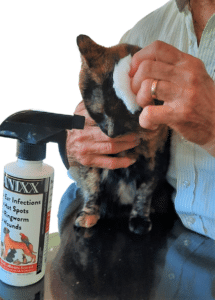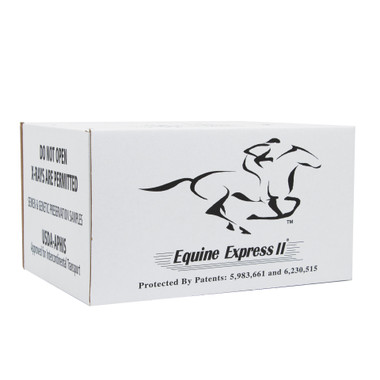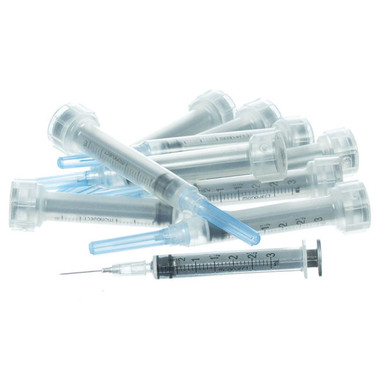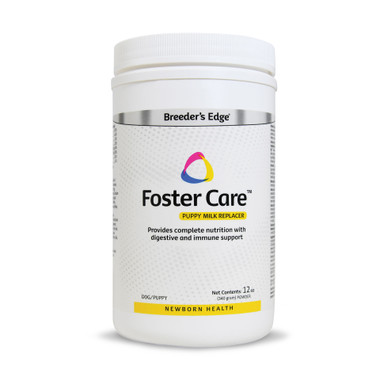Ear Edge Dermatitis in Cats: What You Need to Know
Estimated 0 min read

Cat with ear edge dermatitis
As a loving cat parent, you can often read your kitty’s mood by looking at her expressive ears. If her ears are forward, she’s feeling content or playful. Ears straight up may mean she’s standing at attention. But ears back…..watch out!
But what’s this? Your cat’s outer ears are covered with scabs, or losing hair, or looking inflamed? She scratches and acts irritated and miserable? Your inner gyroscope goes off: You’ve got to find out how to fix this!
Fortunately, you’ve come to the right place! We can tell you your furry friend most likely has “ear edge dermatitis.”And as a matter of fact,we just happen to haveear edge dermatitis treatmentsuggestions for you!
What isear edge dermatitis?
Ear edge dermatitis in catsis a condition in which the external edges of your kitty’s ears (the “pinna”) are inflamed or irritated.
You’ll know your meow machine is suffering from this condition if he’s scratching, shaking his head and otherwise fussing with his ear. Left untreated, ear dermatitis can cause more damage, even “cauliflower ear.”Moreover,if your kitty scratches too much, it can lead to a felinehemotomaor permanent scarring. And if the inflammation moves to the inner ear, it could possibly result in loss of hearing.
Ear edge dermatitiscan have various causes, and you’ll need to identify the underlying issue to know the best method to heal it.
What causes this ugly phenomenon?

Cat with bug bites
Here are some common causes ofear edge dermatitisin cats:
- Bacterial or fungal infections.Has your little guy been fighting, scrambling through bracken, or out in the sun too long (solar dermatitis)? Open scratches, wounds or bites are the perfect playground for bacteria or fungus. The little devils get a foothold and multiply, causing inflammation and infection. And your cat’s only solution is to scratch, scratch, scratch – making things worse.
- Ear mites, parasites and other bugs.Did your kitty get bitten by mosquitoes, fleas or flies? Could ear mites be the perpetrators? A bite can develop into inflammation of the skin and result in scabs and sores on the outer ears and nose. This is often referred to as miliary dermatitis.Consequently,the bites ooze, crust over and dry, leaving hairless or scaly patches. And poor kitty starts to look – gasp! – even scruffy.
- Allergies to food and/or environment.It’s possible your beloved tabby is allergic to something. Certain foods, environmental situations (such as pollen or dust mites), or materials like fabrics or plastics can be the culprits.If this is the case, theallergy can lead to skin problems such as dermatitis on the ear edges.
- Autoimmune disorders.Some autoimmune conditions can cause inflammation of the skin, affecting the ears and other areas. Autoimmune disorders occur when the immune system mistakenly attacks the body’s own tissues.
- Systemic disease.These ugly possibilities can include cancer, Cushing’s disease, and hypothyroidism. Obviously, this is a situation for a vet to handle.
Ear edge dermatitis treatment
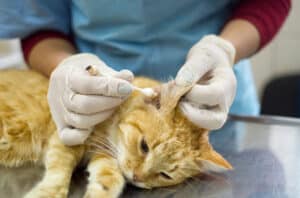
Vet treating cat with ear edge dermatitis
Keeping all of the above in mind,we have some recommendations for resolving dermatitis in cats:
- Get rid of those ear mites and parasites.This is the most common cause of ear edge dermatitis.Even so, itis usually not an urgent situation and can be dealt with at home. We recommend you start with Banixx products (see below), which have proven to be effective in healing bacterial and fungal infections caused by ear mite or other bug bites.
- Get an expert diagnosis.A visit to the vet may be in order if you suspect ear mites or parasites. Whereas you may not be able to see these pesky critters, your Vet has the tools and know-how to ferret them out. Moreover, it’s always a good idea to work with a proper diagnosis and treatment plan. In short order, your vet will figure out the underlying cause and provide medication for the infection and pain. Then this chapter will rapidly be History!
- Keep your cat inside.If the issue is an allergy to mosquitoes, fleas or flies, it just makes sense to avoid these bugs as much as possible.Most indoor cats only get ear mites or bug bites if an already-infected pet comes into the household. So be sure to check out Fido and your other cats as well. (We write this knowing that many a cat lover has More than One!)If you have an outside cat, consider using a prescribed insect repellent during the riskier times of the year. Just make sure it’s prescribed by your vet and made for cats.
- For allergies, get a vet’s help.First,if you’ve recently changed your cat’s diet, try removing the new food.Second, if that doesn’t do the trick,your vet can develop a treatment plan that includes food changes and medications.(This can be a challenge, as Morris The Cat is probably finicky about what he eats.)Finally,the vet can perform tests to identify which environmental allergens cause your cat’s allergies. Allergy shots may help reduce your cat’s allergic reaction.
Most important: Keep Kitty from injuring herself further
No matter what the cause of the ear edge dermatitis, don’t let those scabs and wounds get more inflamed. The vet may prescribe medicines –but, in fact, there are various topical treatments you can buy over the counter. And of course, we recommendBanixx Pet Careas the BEST solution for your cat! It can not only limit the inflammation, but also will get rid of the dermatitis altogether.
Banixx is a powerful, non-toxic, over-the-counter solution that’s clinically proven to treatcat ear infections. It’s completely safe for use around the eye and does its magic without steroids or antibiotics. And never worry, it can be safely used in conjunction with any prescribed medicines.
Best of all, it provides instant relief forcat ear dermatitis– and your feline friend will thank you!
Scruffiness and scratching – be gone!
How to use Banixx to treat ear edge dermatitis
- Spray some Banixx liberally onto a cotton ball.
- Gently apply 2 – 3 times per day on the affected ear. Continue for as long as needed (you cannot overtreat with Banixx). Banixx’s low pH solution will create a hostile environment for bacteria and fungus.As a result,when the bacteria/fungus are wiped out, your cat’s immune system can easily fight the infection.
- Use Banixx Pet Care as a frequent ear wash to prevent infection from getting a strong hold on her ear.
WhileBanixx is a powerful anti-fungal and antibacterial agent, it is also extremely tissue-friendly. It won’t sting, stain, or cause damage to even the most sensitive areas of your furry friend. Clinically proven safe around the eye, it further contains no alcohol.And,with a shelf life of three years, Banixx can be stored at room temperature without fear of spoilage.
Find out morehere.
Got questions about your cat? Check out ourcat blog! We’re here to help! Want info on why cats gethairballs? Or why they justcan’t resist CatNip? And if you have other pets (dogs, horses, chickens, etc.), our blog covers them, too! Check it out today – and come back frequently to see what else we’ve posted!
Sources:
https://wagwalking.com/cat/condition/ear-dermatitis
https://icatcare.org/advice/ear-problems-in-cats/
https://www.merckvetmanual.com/cat-owners/ear-disorders-of-cats/disorders-of-the-outer-ear-in-cats



